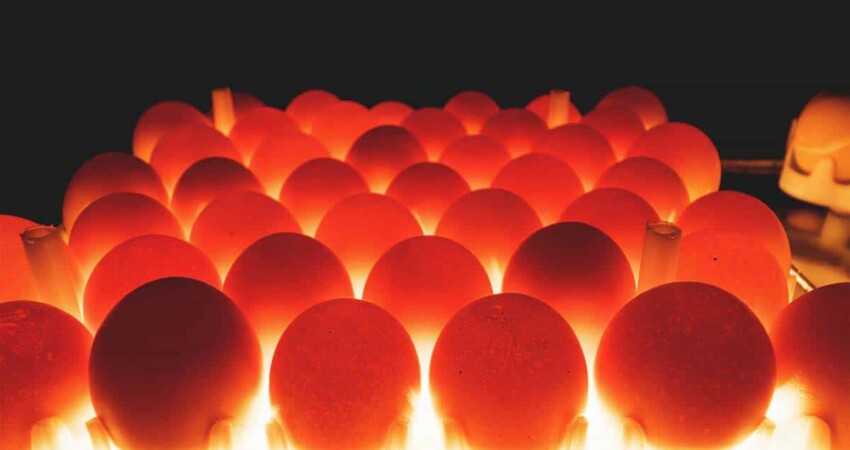

Candling is the process of holding a strong light above or below the egg to observe the embryo. A candling lamp consists of a strong electric bulb covered by a plastic or aluminium container that has a handle and an aperture. The egg is placed against this aperture and illuminated by the light. If you do not have a candling lamp, improvise. Try using a torch. Candling is done in a darkened room or in an area shielded by curtains.
Determining the viability of the embryo
Under the candling lamp, the embryo appears as a dark shadow with the head as a dark spot. Healthy embryos will respond to the light by moving. Sometimes the movement is very sluggish and it can take 30 to 40 seconds for the embryo to move when held under the candling lamp. This indicates the embryo is not healthy and the egg should be discarded.
Look carefully at the blood vessels. They are well defined in a healthy embryo. After an embryo has died, the blood vessels start to break down. They then appear as streaks under the shell when viewed under the candling lamp. Candling will also reveal cracks in the eggshells. Eggs with cracked shells should be discarded.
Infertile eggs: These are easy to detect, as the egg is clear. Discard
Early deaths: The embryo has developed for several days and then died. Candling will reveal a small dark area and disrupted blood vessels. Often deteriorating blood vessels will appear as a dark ring around the egg. Discard.
Late Deaths: These are often difficult to tell apart from a viable embryo at the same stage of development. Look for the absence of movement and the breakdown of the blood vessels. Discard
Viable Embryos: These move in response to the light and have well defined blood vessels. Mark the air sac and the inoculation site and then return the eggs to the incubator ready for inoculation.
 Contact Jaguza Support
Contact Jaguza Support